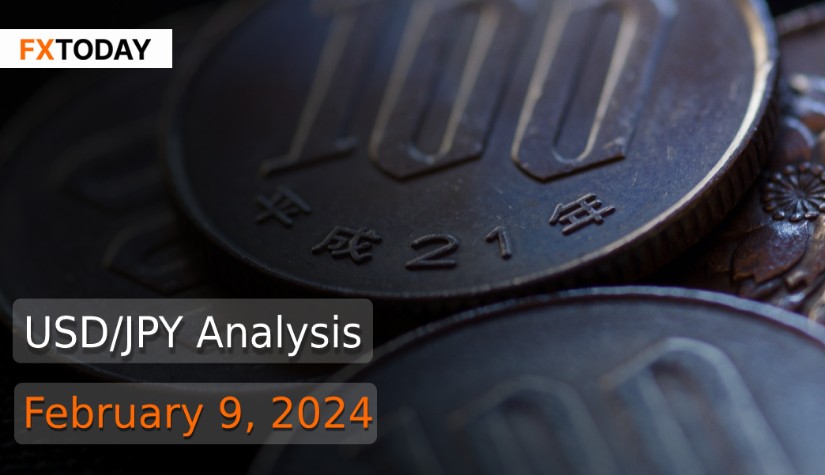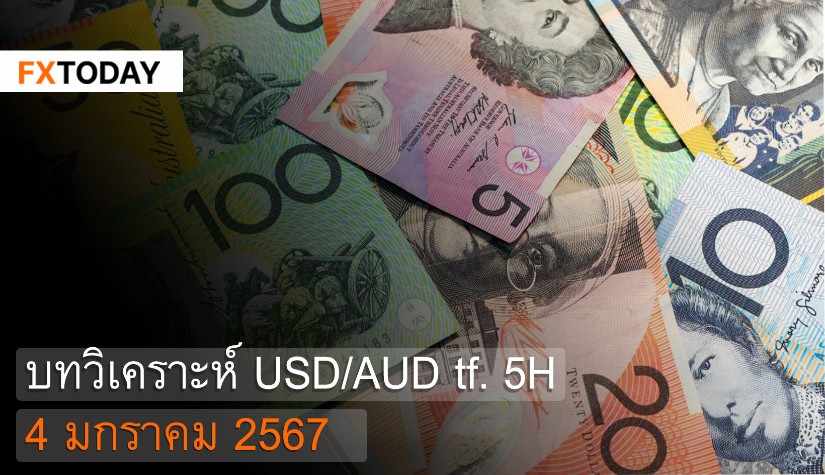Yen Declines Amid Inflation Struggle; Japan's Service Sector Resilient, US Dollar Strengthens
The yen experienced a decline against the US dollar, after the release of initial claims data, marking its lowest point since November 27. Despite this, Japan continues to grapple with economic challenges as real wages fell for the 21st consecutive month, albeit at a slower rate, and household spending dropped for the tenth straight month. These trends underscore the persistent struggle against inflation, which has outpaced wage growth, hampering consumer spending.
Japan's wage trajectory, alongside inflation, holds significant weight, as both are pivotal factors for the Bank of Japan in contemplating the eventual phasing out of its extensive stimulus measures. Prime Minister Fumio Kishida has urged business leaders to raise wages during the spring labor negotiations to surpass last year's levels and counteract inflationary pressures. The country seeks a shift towards demand-driven price increases and higher wages, rather than cost-push inflation driven by energy prices and a weakened yen.
In December, inflation-adjusted real wages declined by 1.9% compared to the previous year, although the rate of decline slowed from November. The government's consumer inflation rate, which includes fresh food prices but excludes rent, moderated to a 3.0% gain, reflecting reduced inflationary pressure from raw material costs.
Amid these economic challenges, Japan's service sector demonstrated resilience, expanding at its strongest pace since September, buoyed by robust demand and a depreciating yen. International demand saw a notable uptick for the first time in five months. The service industry, constituting around 70% of Japan's GDP, has served as a bright spot in an otherwise challenging economic landscape, mitigating some of the manufacturing sector's struggles due to weak global demand.
This surge in business activity was attributed to the first rise in new export business since August, partly fueled by increased inbound tourism, especially in air travel. Despite input price inflation reaching a three-month high due to elevated fuel and labor costs, firms managed to pass on some of these increases to consumers, resulting in the fastest pace of price hikes since August of the previous year. Business confidence for the upcoming 12 months also reached its highest level since May.
However, Bank of Japan Deputy Governor Shinichi Uchida indicated that the central bank is unlikely to aggressively raise interest rates even after exiting negative interest rate territory.
Meanwhile, the US dollar strengthened following positive data on unemployment benefits, reinforcing the Federal Reserve's stance on maintaining interest rates.
The resilience of the US labor market, evidenced by a decline in new claims for unemployment benefits and a reduction in unemployment rolls, suggests continued economic growth momentum from the fourth quarter of the previous year, potentially delaying anticipated interest rate cuts in 2024.
Looking ahead, market focus turns to January's Consumer Price Index reading for further insights into inflation trends. Expectations for US central bank rate cuts by the end of the year have diminished, reflecting a more optimistic outlook on economic conditions. Hence, it could lead to the yen consistently following a stable trajectory within a limited range, facing sustained pressure against the US dollar. However, fluctuations may occur if significant economic data is released from both the United States and Japan during this timeframe.
Data for Technical Analysis (5H) CFD USD/JPY
Resistance : 149.38, 149.42, 149.49
Support : 149.24, 149.20, 149.13
5H Outlook
1H Outlook
Source: Investing.com
Buy/Long 1 If the support at the price range 149.04 – 149.24 is touched, but the support at 149.24 cannot be broken, the TP may be set around 149.38 and the SL around 148.94, or up to the risk appetite.
Buy/Long 2 If the resistance can be broken at the price range of 149.38 – 149.58, TP may be set around 149.90 and SL around 149.14, or up to the risk appetite.
Sell/Short 1 If the resistance at the price range 149.38 – 149.58 is touched, but the resistance at 149.38 cannot be broken, the TP may be set around 149.21 and the SL around 149.68, or up to the risk appetite.
Sell/Short 2 If the support can be broken at the price range of 149.04 – 149.24, TP may be set around 148.31 and SL around 149.48, or up to the risk appetite.
Pivot Points Feb 9, 2024 02:06AM GMT
|
Name
|
S3
|
S2
|
S1
|
Pivot Points
|
R1
|
R2
|
R3
|
|---|---|---|---|---|---|---|---|
| Classic | 149.03 | 149.13 | 149.21 | 149.31 | 149.38 | 149.49 | 149.56 |
| Fibonacci | 149.13 | 149.2 | 149.24 | 149.31 | 149.38 | 149.42 | 149.49 |
| Camarilla | 149.24 | 149.25 | 149.27 | 149.31 | 149.3 | 149.32 | 149.33 |
| Woodie's | 149.03 | 149.13 | 149.21 | 149.31 | 149.38 | 149.49 | 149.56 |
| DeMark's | - | - | 149.17 | 149.29 | 149.35 | - | - |
Sources: Investing 1, Investing 2
















